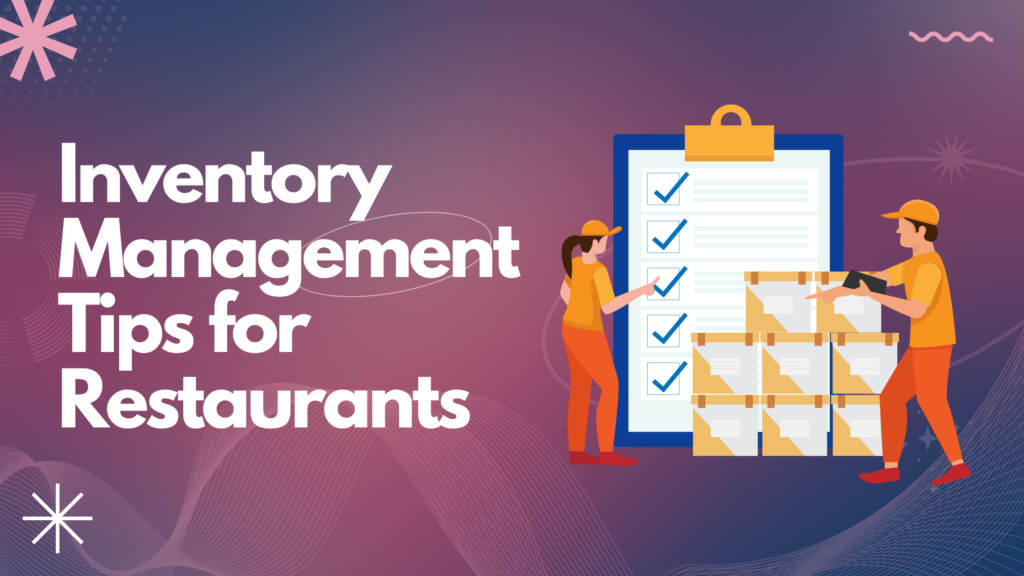Inventory Management Tips for Restaurants
What is Restaurant Inventory Management?
Restaurant inventory management refers to the practice of sourcing, tracking, and expending every ingredient and supply that a restaurant utilizes. Just like managing product inventory in a retail store, food inventory must be overseen and measured in a restaurant. The primary objectives of restaurant inventory management include controlling and tracking food costs, monitoring ingredient volume consistently, and minimizing food waste.
Types of Restaurant Inventory
Food inventory in a restaurant encompasses a wide range of items. It includes not only the ingredients used to create the final dishes but also other supplies and equipment necessary for food preparation and service. Here are some examples of items that fall under the category of restaurant inventory:
- Fruits, vegetables, meats, and poultry
- Dry goods like pasta, beans, and rice
- Spices, herbs, and other garnishes
- Liquids like soda, beverages, and liquor
- Cooking equipment and appliances
- Linens, utensils, and serving ware
It’s important to note that the specific composition of food inventory may vary depending on the type of restaurant establishment. For example, food trucks may require less inventory compared to brick-and-mortar restaurants, leading to reduced overhead costs.
Benefits of Restaurant Inventory Management
Effective restaurant inventory management offers numerous benefits that contribute to the overall success and profitability of a restaurant. Let’s explore some of the key advantages:
1. Optimizing Profit Margin
By closely monitoring and controlling food stock, restaurant inventory management helps optimize profit margins. With accurate tracking of ingredients and their associated costs, restaurant owners can make informed decisions about menu pricing and ingredient sourcing. This enables them to strike a balance between offering high-quality dishes and maximizing profitability.
2. Mitigating Food Waste
Food waste is a significant concern for restaurants, both from an environmental and financial standpoint. With proper inventory management, restaurants can minimize food waste by accurately forecasting ingredient requirements based on past demand trends. By avoiding overstocking and ensuring efficient utilization of ingredients, restaurants can significantly reduce food waste and associated costs.
3. Forecasting Supply Needs
Accurate inventory management enables restaurants to forecast their supply needs effectively. By analyzing historical data and trends, restaurants can anticipate fluctuations in demand and adjust their inventory levels accordingly. This proactive approach helps prevent stockouts of key ingredients, ensuring smooth operations and customer satisfaction.
4. Streamlining Operations
An organized and efficient inventory management system streamlines restaurant operations. With real-time tracking of inventory levels, restaurants can automate reordering processes, eliminating the need for manual counting and reducing the risk of human error. This saves valuable time and resources, allowing restaurant staff to focus on delivering exceptional dining experiences.
5. Meeting Customer Expectations
Consistency is key in the restaurant industry. By maintaining accurate inventory records, restaurants can ensure that they can consistently produce and serve their planned menu items. This helps prevent disappointing customers with out-of-stock items and contributes to a positive dining experience.
5 Essential Tips for Managing Restaurant Inventory
Now that we understand the importance of restaurant inventory management, let’s dive into some expert tips and best practices that can help you effectively manage your restaurant’s inventory.
1. Invest in Quality Inventory Management Tools
Investing in a reliable inventory and kitchen management software is one of the best decisions a restaurant owner can make. While manual tracking may still be helpful in certain cases, automated software offers unmatched efficiency and ease. A robust inventory management tool can automatically track inventory levels in real-time, recommend product refills, predict future demand, and track food waste.
2. Delegate Inventory Management to Trusted Staff
As a restaurant owner, it’s impossible to be everywhere at once. To effectively manage your restaurant’s inventory, entrust the task to a reliable and detail-oriented employee. Ideally, a manager or an associate manager should oversee inventory management as part of their responsibilities. By delegating this important task to a trusted staff member, you can ensure that inventory levels are consistently monitored and controlled.
3. Maintain Consistent Inventory Tracking
Consistency is crucial in inventory management. Restaurants should review their inventory data on a regular basis, typically on a weekly basis. However, depending on customer volume and demand, nightly reviews may be necessary. By consistently reviewing inventory levels, waste, and costs on the same day and time, you can obtain the most accurate picture of your kitchen’s inventory. Inconsistencies in review timings may lead to inaccurate assessments of ingredient availability.
4. Establish a Backup System
While digital inventory management software is highly efficient, technical problems can occur. It’s essential to establish a backup system to track inventory manually in case of software malfunctions. An inventory sheet, either on paper or in an Excel spreadsheet, can be a reliable backup method. Inventory sheets should include details such as ingredient quantities, low-stock alerts, and upcoming purchase requirements.
5. Leverage Data Trends
Whether you’re using a manual or automated inventory management system, the data it generates is invaluable. Take advantage of this data to gain insights into ingredient popularity, food waste trends, and profitability. By consistently feeding accurate information into your inventory system, you can make informed decisions to optimize your restaurant’s profitability and streamline operations.
Restaurant Inventory Terminology
Like any specialized field, restaurant inventory management has its own terminology and jargon. Familiarizing yourself with these terms will help you navigate the world of inventory management more effectively. Here are some commonly used terms:
Cost of Goods Sold (COGS): The final balance of a restaurant’s total inventory, calculated by adding the starting inventory to the newly purchased inventory and subtracting the inventory left over after a recorded period.
Usage: The amount of an inventory product used within a given period, typically measured in monetary value. Usage informs the yield and profitability of a restaurant’s menu items.
Sitting Inventory: The amount of a particular ingredient present in the restaurant at a given moment, typically measured in consistent units such as dollars or pounds.
Dead Stock: The collection of products in a restaurant that are not selling well and are not predicted to sell well in the future. Dead stock can negatively impact a restaurant’s profitability.
Par Level: The minimum quantity of an ingredient required to fulfill a dish or order within a given period. Par level aims to strike a balance between avoiding stockouts and minimizing food waste.
Catch Weight: A measurement used for natural foods like produce and meat, which fluctuate in weight. Catch weight provides flexibility in weight margins and helps manage yields accordingly.
First In, First Out (FIFO): A method of inventory management that ensures the oldest ingredients are used first. This minimizes the risk of ingredients expiring or going bad before they can be utilized.
Inventory Turnover Ratio: This ratio indicates the percentage of purchased inventory that a restaurant sells over a given period. A higher turnover ratio indicates efficient inventory management and utilization.
By familiarizing yourself with these terms and incorporating them into your inventory management practices, you can effectively communicate and navigate the world of restaurant inventory.
Conclusion
Effective restaurant inventory management is a critical aspect of running a successful restaurant. By implementing the tips and best practices outlined in this comprehensive guide, you can reduce food waste, prevent stockouts, and optimize your purchasing decisions.
Investing in quality inventory management tools, delegating responsibilities to trusted staff, maintaining consistent tracking, establishing backup systems, and leveraging data trends will set you on the path to efficient and profitable inventory management. Remember, a well-managed inventory system not only enhances your bottom line but also contributes to an exceptional dining experience for your customers.





